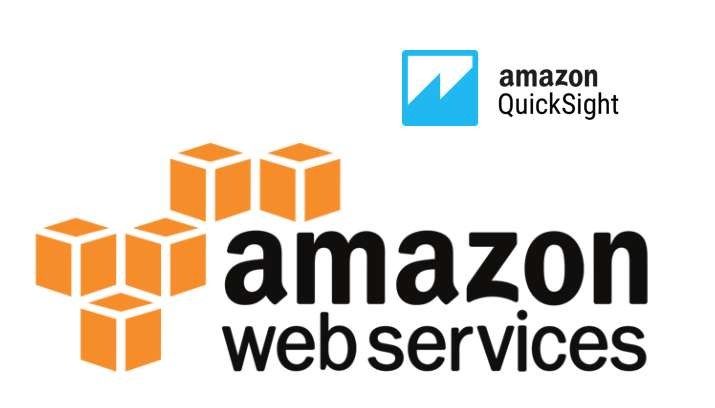How to Integrate QuickSight into a Rails React Application

QuickSight, a business intelligence service by Amazon Web Services (AWS), provides a cloud-based data visualization and analytics platform.
To integrate QuickSight into a Rails React application, you can follow the below steps:
- First of all, you need to create a dashboard on quicksight
- create a cognito pool and associate it with the quicksight
-
add
gem 'aws-sdk-quicksight’andgem 'aws-sdk-cognitoidentity’to your gemfileTo associate cognito with quicksight go to ‘Security & permissions’
Click on the “Add or Remove” button next to “Amazon Cognito user pools”.
- Now add quicksight embedder service which will fetch the dashboard URL
1
2
3
4
5
6
7
8
9
10
11
12
13
14
15
16
17
18
19
20
21
22
23
24
25
26
27
28
29
30
31
32
33
34
35
36
37
38
39
40
41
42
43
44
45
46
47
48
49
50
51
52
53
54
55
56
57
58
59
60
61
62
63
64
65
66
67
68
69
70
71
72
73
74
75
76
77
78
79
80
81
82
require 'aws-sdk-quicksight'
require 'aws-sdk-cognitoidentity'
class QuicksightEmbedder
attr_reader :user
def initialize
@user = User.current
end
def get_dashboard_url
assume_role_resp = assume_cognito_role
qs_client_configs = set_quicksight_client_configs(assume_role_resp)
qs_client = Aws::QuickSight::Client.new(qs_client_configs)
register_user_in_quicksight(qs_client)
result = get_embed_url(qs_client)
render json: { embed_url: result.embed_url, status: result.status }
end
private
def get_embed_url(qs_client)
dashboard_params = {
aws_account_id: ENV['AWS_ACCOUNT_ID'],
dashboard_id: *dashboard_id,
identity_type: 'IAM',
session_lifetime_in_minutes: 300
}
qs_client.get_dashboard_embed_url(dashboard_params)
end
def assume_cognito_role
client = Aws::CognitoIdentity::Client.new({ region: *AWS_REGION })
# Note that the client.get_id call here is what creates a new Cognito user.
get_id_response = client.get_id({ identity_pool_id: *cognito_identity_pool_id })
token_resp = client.get_open_id_token({
identity_id: get_id_response.identity_id
})
configs = {
credentials: Aws::Credentials.new(
ENV['AWS_ACCESS_KEY_ID'],
ENV['AWS_SECRET_ACCESS_KEY']
),
region: 'us-east-1'
}
sts = Aws::STS::Client.new(configs)
assume_role_params = {
role_arn: cognito_identity_role_arn,
role_session_name: @user.email,
web_identity_token: token_resp.token
}
# Now we assume the identity pool role:
sts.assume_role_with_web_identity(assume_role_params)
end
def cognito_identity_role_arn
*you can find this arn in cognito pool
end
def set_quicksight_client_configs(assume_role_resp)
Aws.config.update({
access_key_id: assume_role_resp.credentials.access_key_id,
secret_access_key: assume_role_resp.credentials.secret_access_key,
session_token: assume_role_resp.credentials.session_token,
region: *region
})
{
credentials: assume_role_resp,
region: *region
}
end
def register_user_in_quicksight(qs_client)
qs_client.register_user({
identity_type: 'IAM',
email: user.email,
user_role: 'READER',
iam_arn: cognito_identity_role_arn,
session_name: user.email,
aws_account_id: ENV['AWS_ACCOUNT_ID'],
namespace: 'default'
})
end
end
This method will give you dashboard ID from which you can fetch the quicksight dashboard
- Then create a react component and call this
get_dashboard_urlmethod - Component is as follows:-
1
2
3
4
5
6
7
8
9
10
11
12
13
14
15
16
17
18
19
20
21
22
23
24
25
26
import React, { useEffect, useState } from 'react';
const QuicksightDashboard = () => {
useSetBreadCrumb([{ name: 'Quicksight Dashboard' }]);
const [EmbedURL, setEmbedURL] = useState('');
useEffect(() => {
getRequest({
url: '/quicksight_dashboard/get_dashboard_url',
}).then(data => {
setEmbedURL(data.embed_url);
});
}, []);
return (
<div>
<div id="embeddingContainer" />
<iframe
title="quicksightdashboard"
style=
src={EmbedURL}
/>
</div>
);
};
export default QuicksightDashboard;
this component will hit a request and get the dashboard URL and then it will show it on the page using an iframe
Integrating QuickSight into a Rails React application can be a great way to add powerful data visualization capabilities to your web application. With the use of the AWS SDKs and the QuickSight Embedding API, you can easily fetch the dashboard URL and display the dashboard using an iframe in your application.
References:-

 Never miss a story from us, subscribe to our newsletter
Never miss a story from us, subscribe to our newsletter